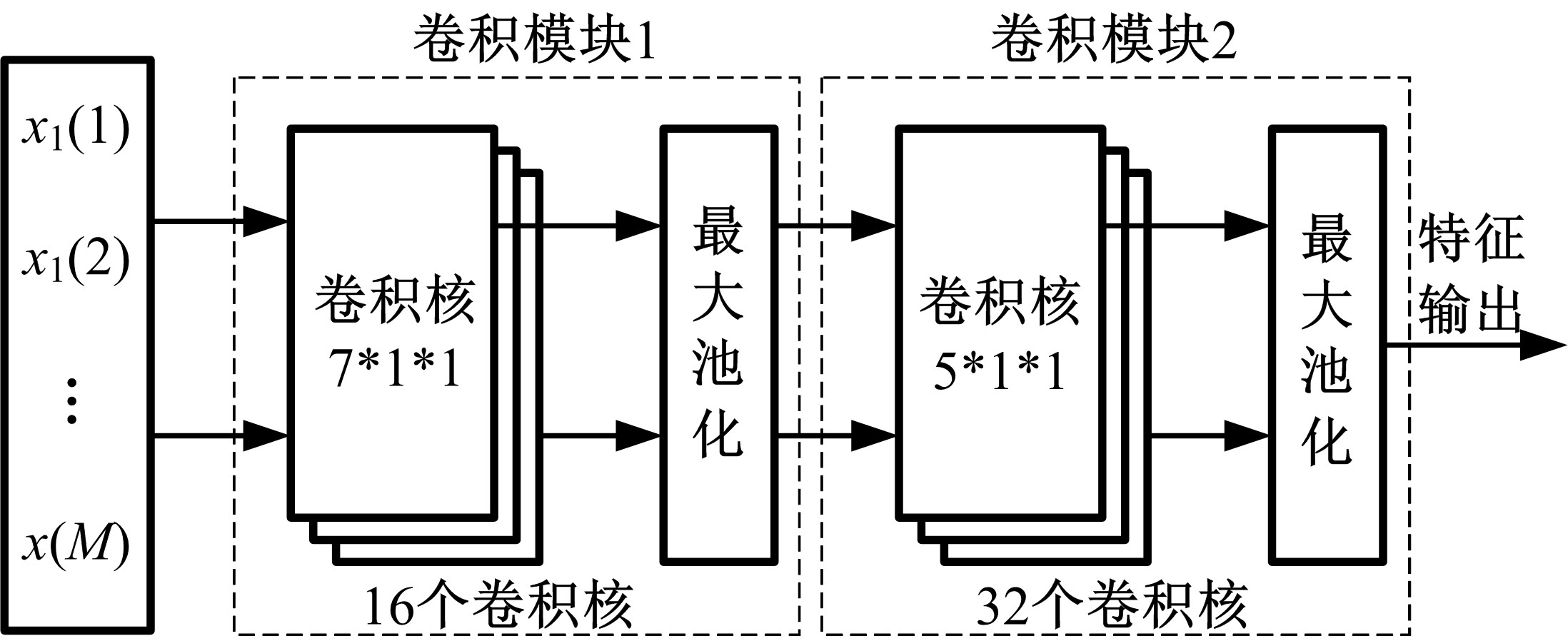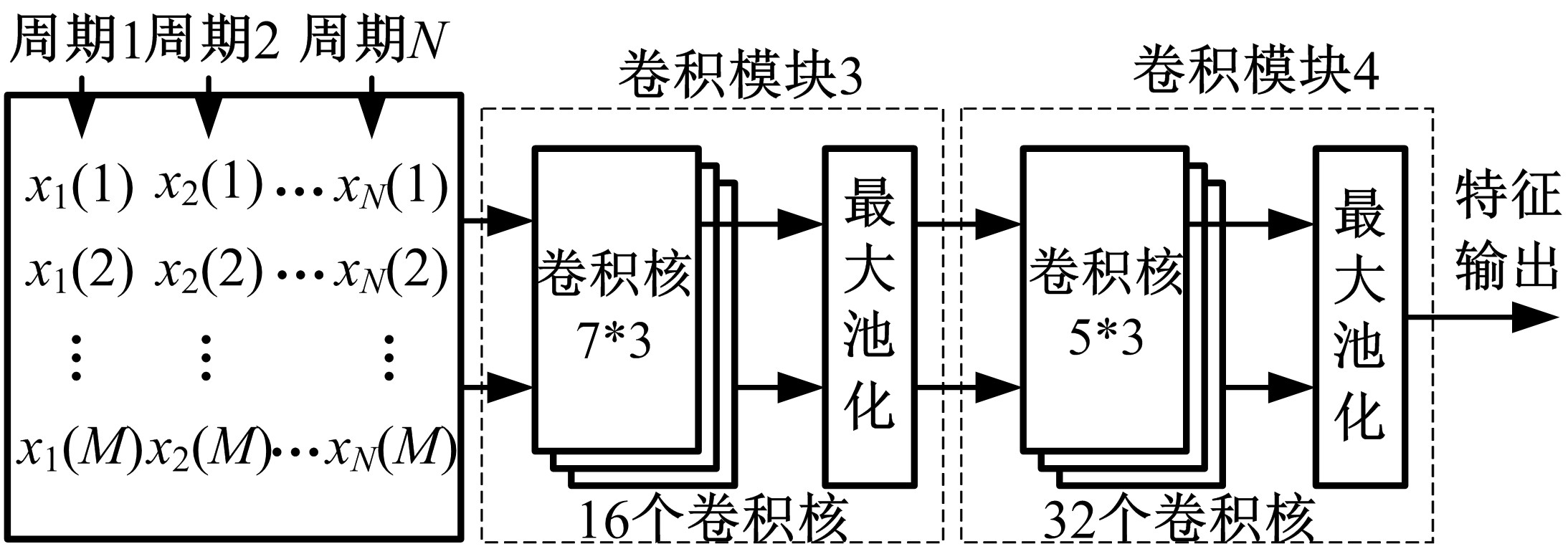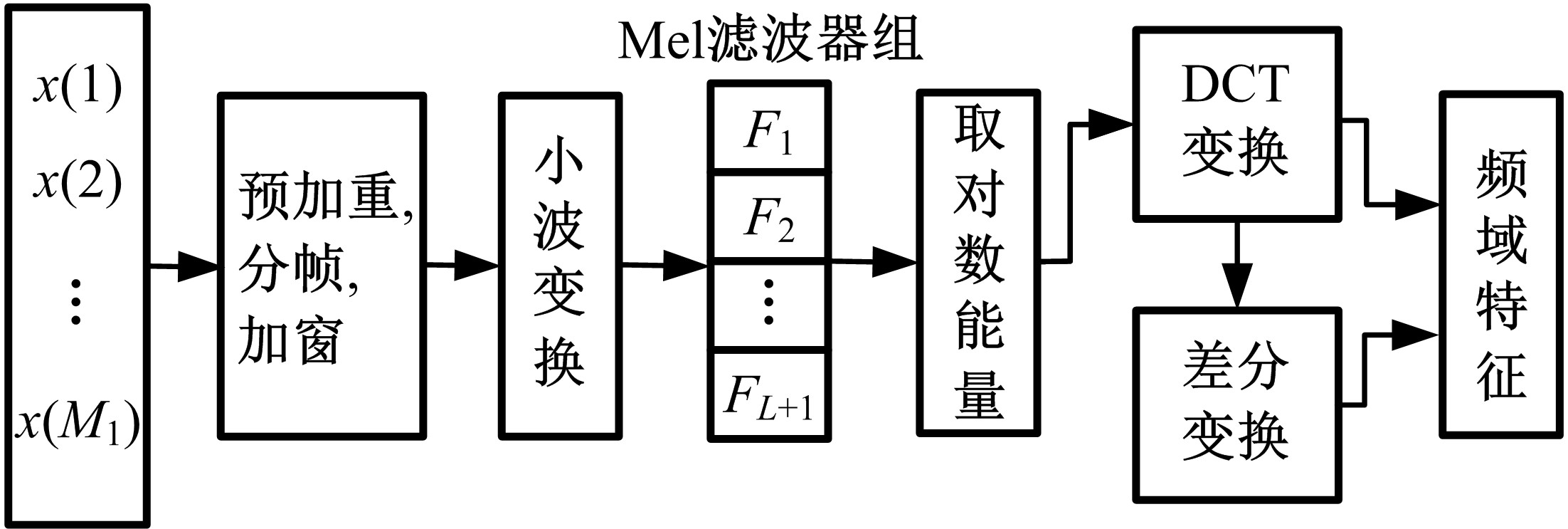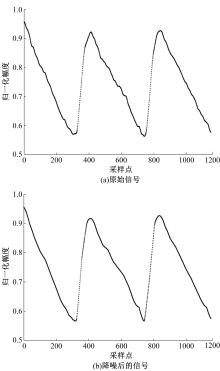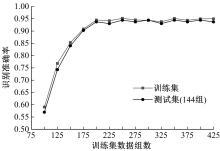Journal of Jilin University(Engineering and Technology Edition) ›› 2020, Vol. 50 ›› Issue (5): 1818-1825.doi: 10.13229/j.cnki.jdxbgxb20190504
Pulse wave signal classification algorithm based on time⁃frequency domain feature aliasing using convolutional neural network
Guo-hua LIU1,2( ),Wen-bin ZHOU1,2
),Wen-bin ZHOU1,2
- 1.School of Electronic Information and Optical Engineering, Nankai University, Tianjin 300350, China
2.Key Laboratory of Photoelectric Sensors and Sensor Network Technology, Nankai University, Tianjin 300350, China
CLC Number:
- TN911.7
| 1 | 郭维, 刘光达, 张晓枫, 等. 基于多特征参数综合分析脉搏波信号失真度算法的实现[J]. 吉林大学学报: 工学版, 2012, 42(4): 1044-1048. |
| Guo Wei, Li Guang-da, Zhang Xiao-feng, et al. Realization of algorithm of abnormal pulse wave signal detection based on associate factor of pulse features[J]. Journal of Jilin University(Engineering and Technology Edition), 2012, 42(4): 1044-1048. | |
| 2 | 张爱华, 王平, 丑永新. 基于动态差分阈值的脉搏信号峰值检测算法[J]. 吉林大学学报: 工学版, 2014, 44(3): 847-853. |
| Zhang Ai-hua, Wang Ping, Yong-xin Chou. Peak detection of pulse signal based on dynamic difference threshold[J]. Journal of Jilin University(Engineering and Technology Edition), 2014, 44(3): 847-853. | |
| 3 | 马佳辉. 基于脉搏信号的人体脉搏特征参数的研究[D].北京: 北京邮电大学电子工程学院, 2018. |
| Ma Jia-hui. Research of pulse characteristic parameters of human body based on pulse signal[D]. Beijing: School of Electronic Engineering, Beijing University of Posts and Telecommunications, 2018. | |
| 4 | 杜昭慧, 司玉娟. 基于层次支持向量机的脉搏信号情感识别[J]. 吉林大学学报: 信息科学版, 2017, 35(1): 37-42. |
| Du Zhao-hui, Si Yu-juan. Emotion recognition of pulse signal based on hierarchical support vector machine[J]. Journal of Jilin University(Information Science Edition), 2017, 35(1): 37-42. | |
| 5 | 柳兆荣, 李惜惜. 关于脉图的分析[J]. 中国科学(B辑), 1983, 13(2): 131-138. |
| Liu Zhao-rong, Li Xi-xi. Analysis of the pulse map[J]. Chinese Science(Series B), 1983, 13(2): 131-138. | |
| 6 | 唐铭一, 李凯, 马小铁. 脉搏波信号时域特征提取与算法的研究[J]. 计算机与现代化, 2010(4): 15-17, 22. |
| Tang Ming-yi, Li Kai, Ma Xiao-tie. Research on pulse wave signal and time-domain feature extraction algorithm[J]. Computer and Modernization, 2010(4): 15-17, 22. | |
| 7 | 徐可欣, 王继寸, 余辉, 等. 脉搏波时域特征与血压相关性的研究[J]. 中国医疗设备, 2009, 24(8): 42-45. |
| Xu Ke-xin, Wang Ji-cun, Yu Hui, et al. Research of correlation between time-domain characteristics of the pulse wave and blood pressure[J]. China Medical Equipment, 2009, 24(8): 42-45. | |
| 8 | 胡阳生. 基于卷积神经网络的脉搏分析方法研究[D]. 北京:北京邮电大学电子工程学院, 2018. |
| Hu Yang-sheng. Study on pulse analysis method based on convolution neural network[D]. Beijing: School of Electronic Engineering, Beijing University of Posts and Telecommunications, 2018. | |
| 9 | 陈星池, 黄淑春, 赵海, 等. 基于极限学习机的中医脉象识别方法[J]. 东北大学学报: 自然科学版, 2017, 38(9): 1226-1229. |
| Chen Xing-chi, Huang Shu-chun, Zhao Hai, et al. Recognition method of traditional Chinese medicine pulse conditions based on extreme learning machine[J]. Journal of Northeastern University(Natural Science), 2017, 38(9): 1226-1229. | |
| 10 | 董丽娜, 何怡, 叶卫平. 基于小波分析的梅尔频率倒谱参数[J]. 北京师范大学学报: 自然科学版, 2015, 51(5): 469 -474. |
| Dong Li-na, He Yi, Ye Wei-ping. Wavelet analysis based Mel frequency cepstrum parameters[J]. Journal of Beijing Normal University(Natural Science), 2015, 51(5): 469-474. | |
| 11 | Nogueira D M, Ferreira C A, Jorge A M. Classifying heart sounds using images of MFCC and temporal features[C]∥Portuguese Conference on Artificial Intelligence, Springer, Cham, 2017: 186-203. |
| 12 | 高印寒, 谢军, 梁杰, 等. 基于小波分析的听觉滤波器组模型[J]. 吉林大学学报: 工学版, 2008, 38(): 177-181. |
| Gao Yin-han, Xie Jun, Liang Jie, et al. Auditory filter bank model based on wavelet transform[J]. Journal of Jilin University(Engineering and Technology Edition), 2008, 38(Sup.1): 177-181. | |
| 13 | Goldberger A L, Amaral L A N, Glass L, et al. PhysioBank, PhysioToolkit, and PhysioNet: components of a new research resource for complex physiologic signals[J]. Circulation, 2000, 101(23): 215-220. |
| [1] | Zai-feng SHI,Jin-zhuo LI,Qing-jie CAO,Hui-long LI,Qi-xing HU. Low⁃dose spectral computer⁃tomography imaging denoising method via a generative adversarial network [J]. Journal of Jilin University(Engineering and Technology Edition), 2020, 50(5): 1755-1764. |
| [2] | Ke-yan WANG,Di WANG,Xi ZHAO,Jing-yi CHEN,Yun-song LI. Image dehazing based on joint estimation via convolutional neural network [J]. Journal of Jilin University(Engineering and Technology Edition), 2020, 50(5): 1771-1777. |
| [3] | Xiang-jiu CHE,You-zheng DONG. Improved image recognition algorithm based on multi⁃scale information fusion [J]. Journal of Jilin University(Engineering and Technology Edition), 2020, 50(5): 1747-1754. |
| [4] | Hua CHEN,Wei GUO,Jing-wen YAN,Wen-hao ZHUO,Liang-bin WU. A new deep learning method for roads recognition from SAR images [J]. Journal of Jilin University(Engineering and Technology Edition), 2020, 50(5): 1778-1787. |
| [5] | Wei ZHANG,Yong HAN,Ming JIN,Xiao-lin QIAO. Toeplitz matrices reconstruction based DOA estimation for coherent signals [J]. Journal of Jilin University(Engineering and Technology Edition), 2020, 50(2): 703-710. |
| [6] | Yan-fen CHENG,Li-juan YAO,Qiao YUAN,Xian-qiao CHEN. Clearing strategy of underwater video image [J]. Journal of Jilin University(Engineering and Technology Edition), 2020, 50(2): 668-677. |
| [7] | Xiao-hui YU,Zhi-cheng ZHANG,Xin-bo LI,Xiao-dong SUN. Parameter estimation of exponentially damped sinusoidsbased on state⁃space model [J]. Journal of Jilin University(Engineering and Technology Edition), 2019, 49(6): 2083-2088. |
| [8] | Xiang-jiu CHE,Hua-luo LIU,Qing-bin SHAO. Fabric defect recognition algorithm based onimproved Fast RCNN [J]. Journal of Jilin University(Engineering and Technology Edition), 2019, 49(6): 2038-2044. |
| [9] | Fu LIU, Mei-jing QUAN, Ke WANG, Yun LIU, Bing KANG, Zhi-wu HAN, Tao HOU. Indoor positioning method based on location fingerprinting of imitating mechanism of scorpion vibration source [J]. Journal of Jilin University(Engineering and Technology Edition), 2019, 49(6): 2076-2082. |
| [10] | Hong-wei ZHAO,Peng WANG,Li-li FAN,Huang-shui HU,Ping-ping LIU. Similarity retention instance retrieval method [J]. Journal of Jilin University(Engineering and Technology Edition), 2019, 49(6): 2045-2050. |
| [11] | Zi-ji MA,Hao LU,Yan-ru DONG. Dual path convolutional neural network forsingle image super⁃resolution [J]. Journal of Jilin University(Engineering and Technology Edition), 2019, 49(6): 2089-2097. |
| [12] | Yang LU,Shi-gang WANG,Wen-ting ZHAO,Yan ZHAO. Facial expression recognition based on separability assessment of discrete Shearlet transform [J]. Journal of Jilin University(Engineering and Technology Edition), 2019, 49(5): 1715-1725. |
| [13] | Chao DONG,Jing⁃hong LIU,Fang XU,Ren⁃hao WANG. Fast ship detection in optical remote sensing images [J]. Journal of Jilin University(Engineering and Technology Edition), 2019, 49(4): 1369-1376. |
| [14] | Ke⁃yan WANG,Yan HU,Huai WANG,Yun⁃song LI. Image dehazing algorithm by sky segmentation and superpixel⁃level dark channel [J]. Journal of Jilin University(Engineering and Technology Edition), 2019, 49(4): 1377-1384. |
| [15] | Xiong-fei LI,Lu SONG,Xiao-li ZHANG. Remote sensing image fusion based on cooperative empirical wavelet transform [J]. Journal of Jilin University(Engineering and Technology Edition), 2019, 49(4): 1307-1319. |
|
||

